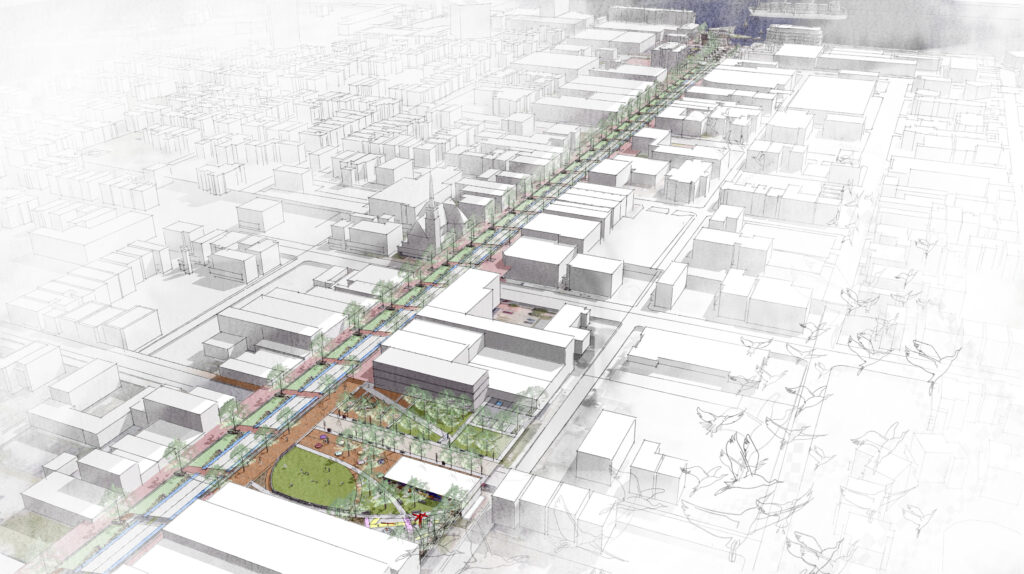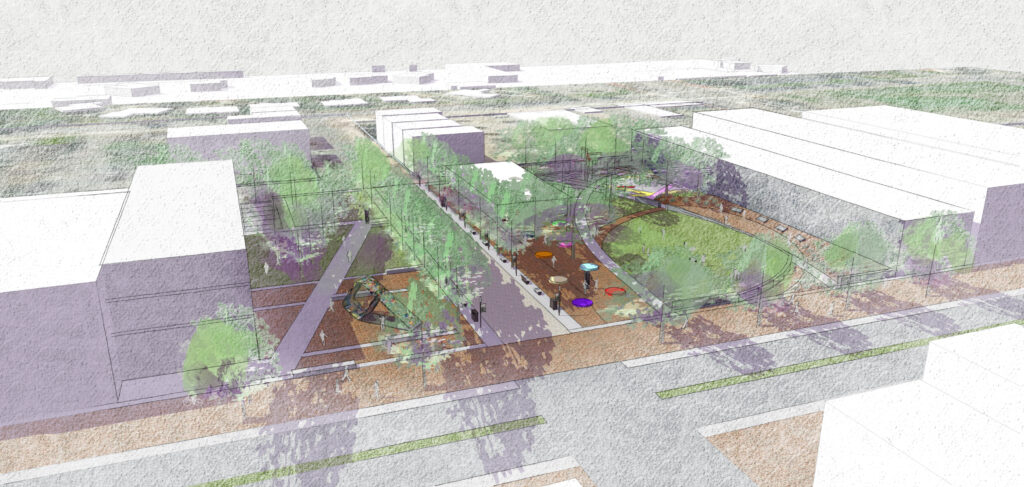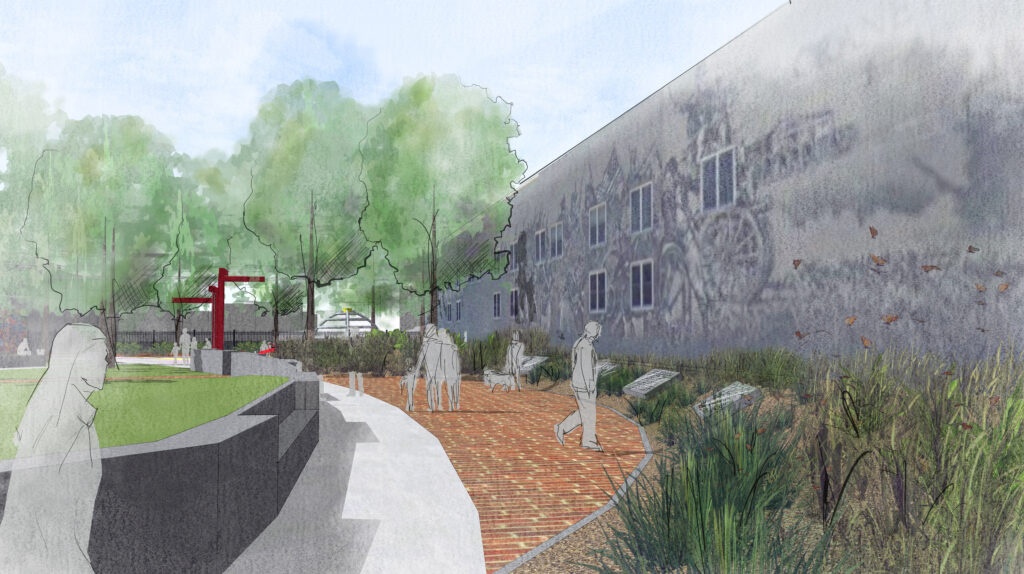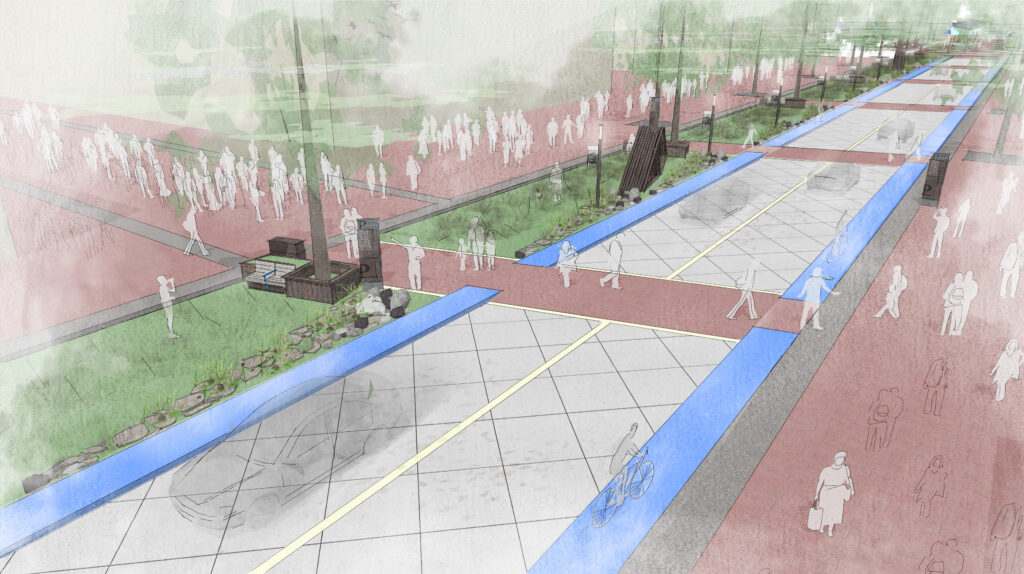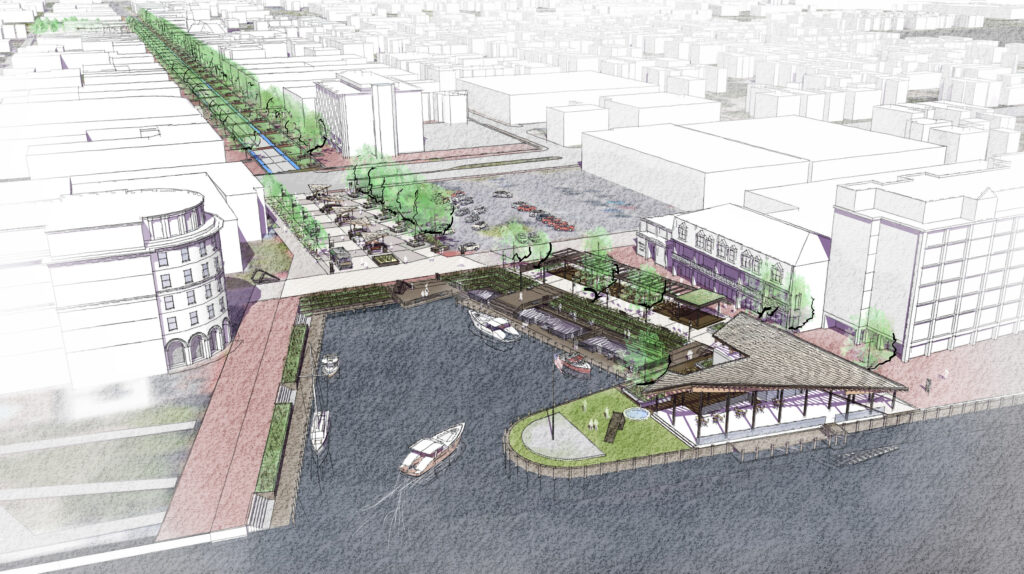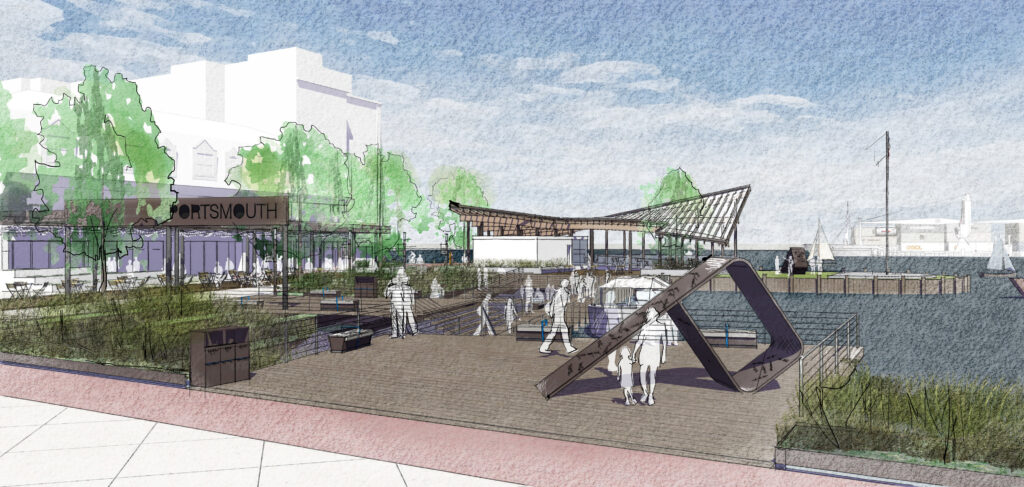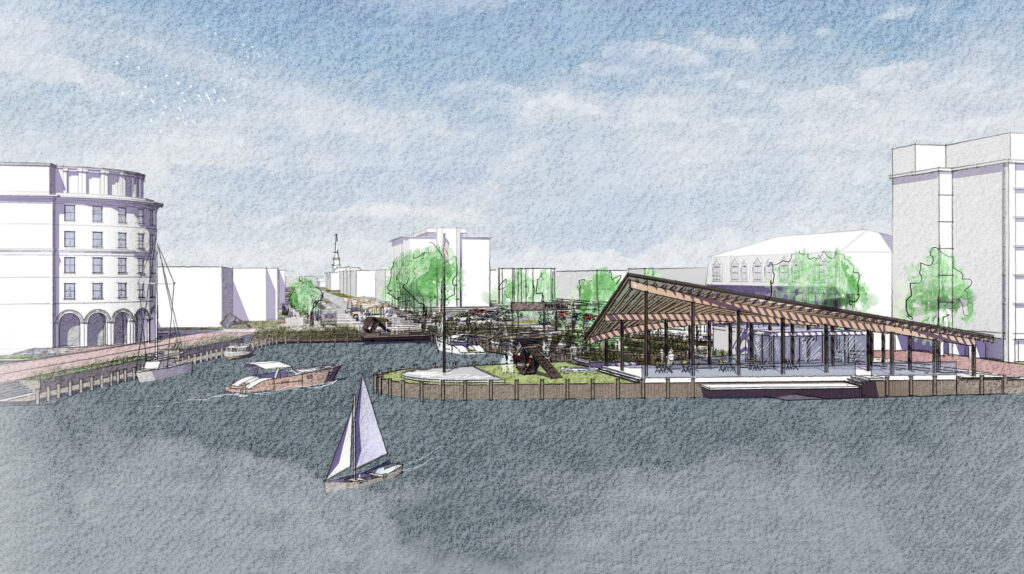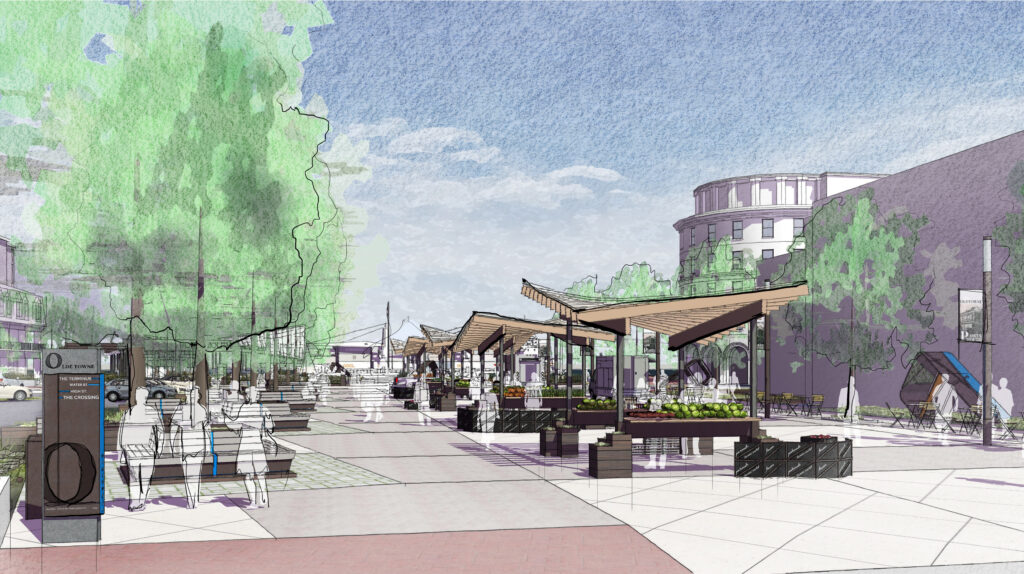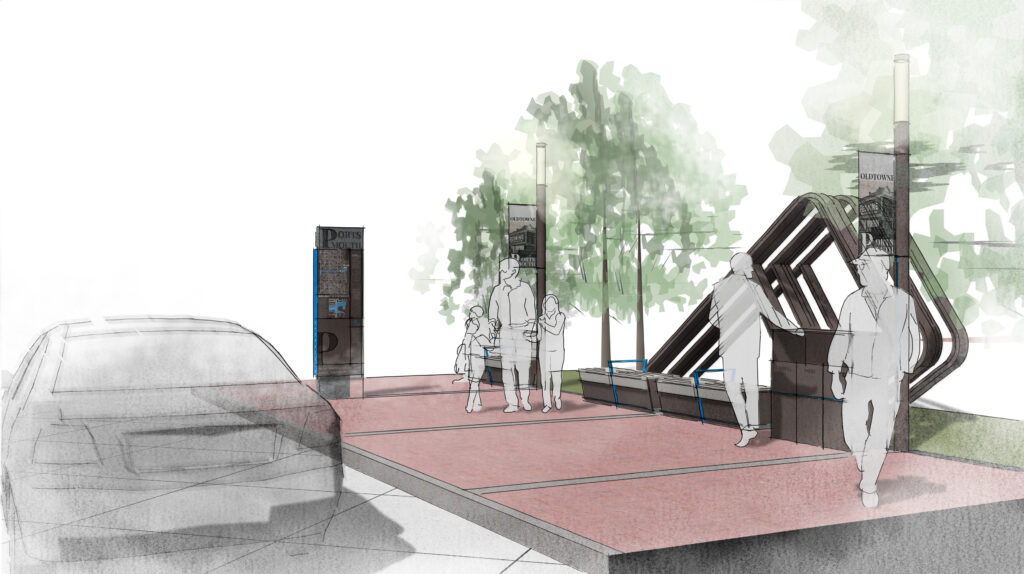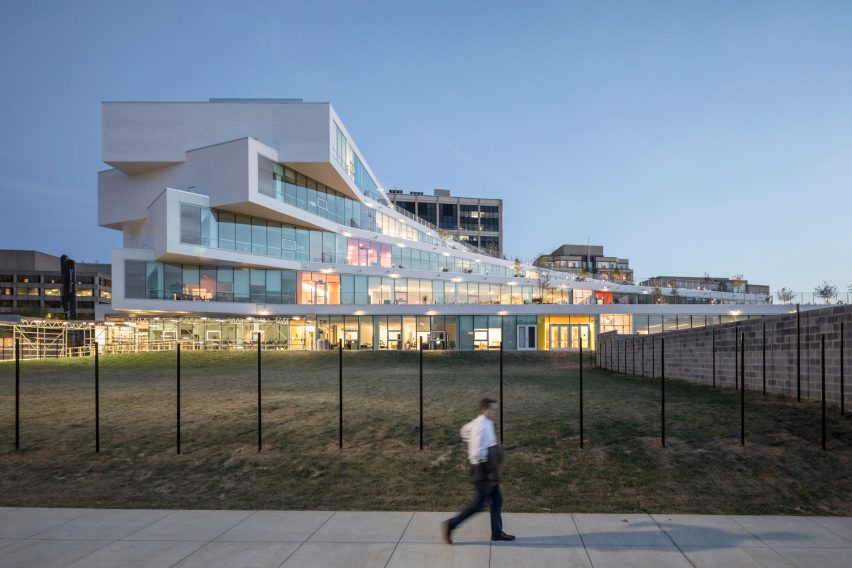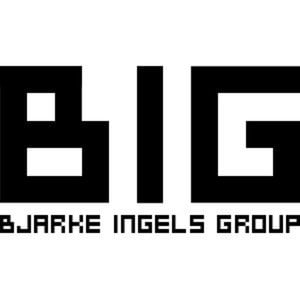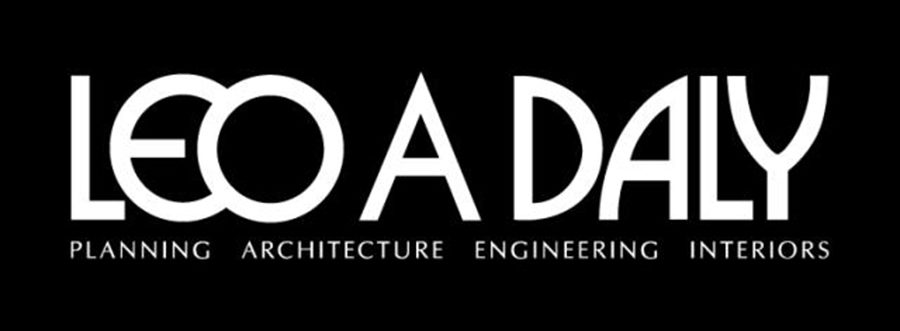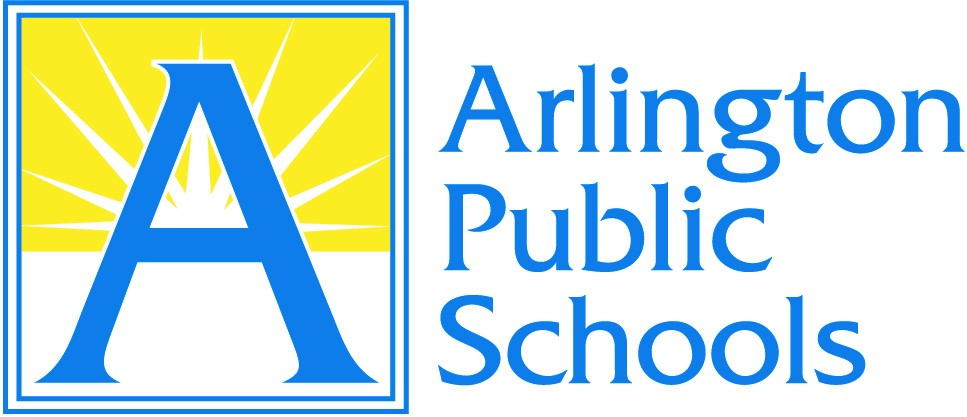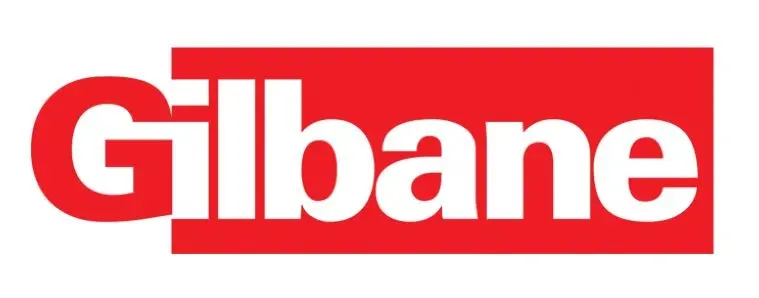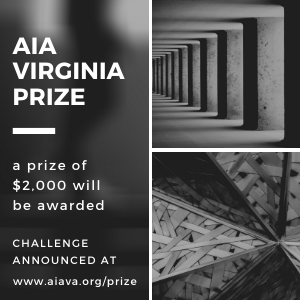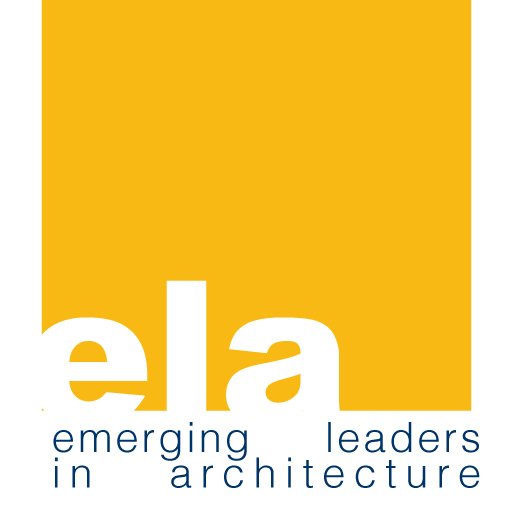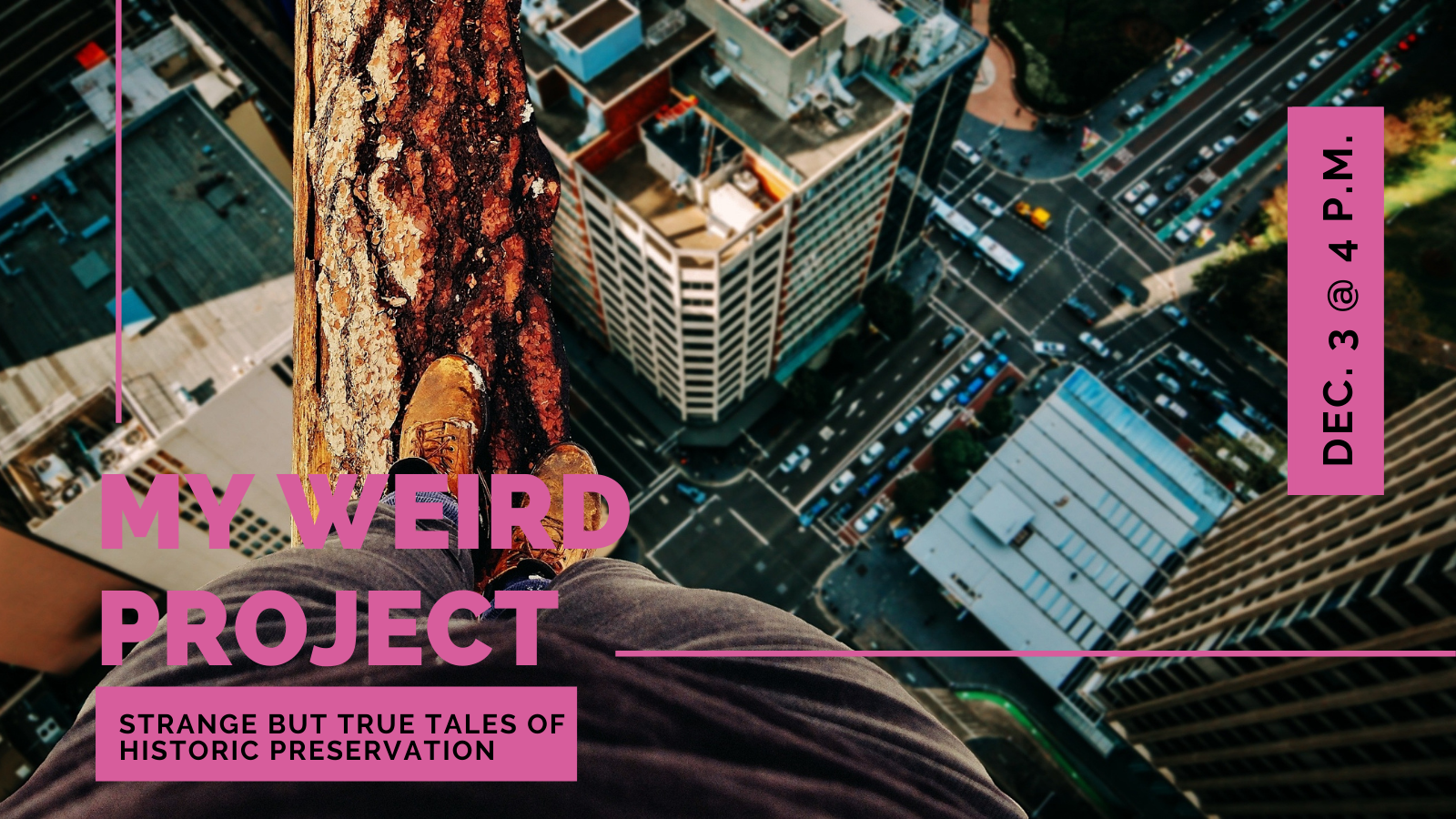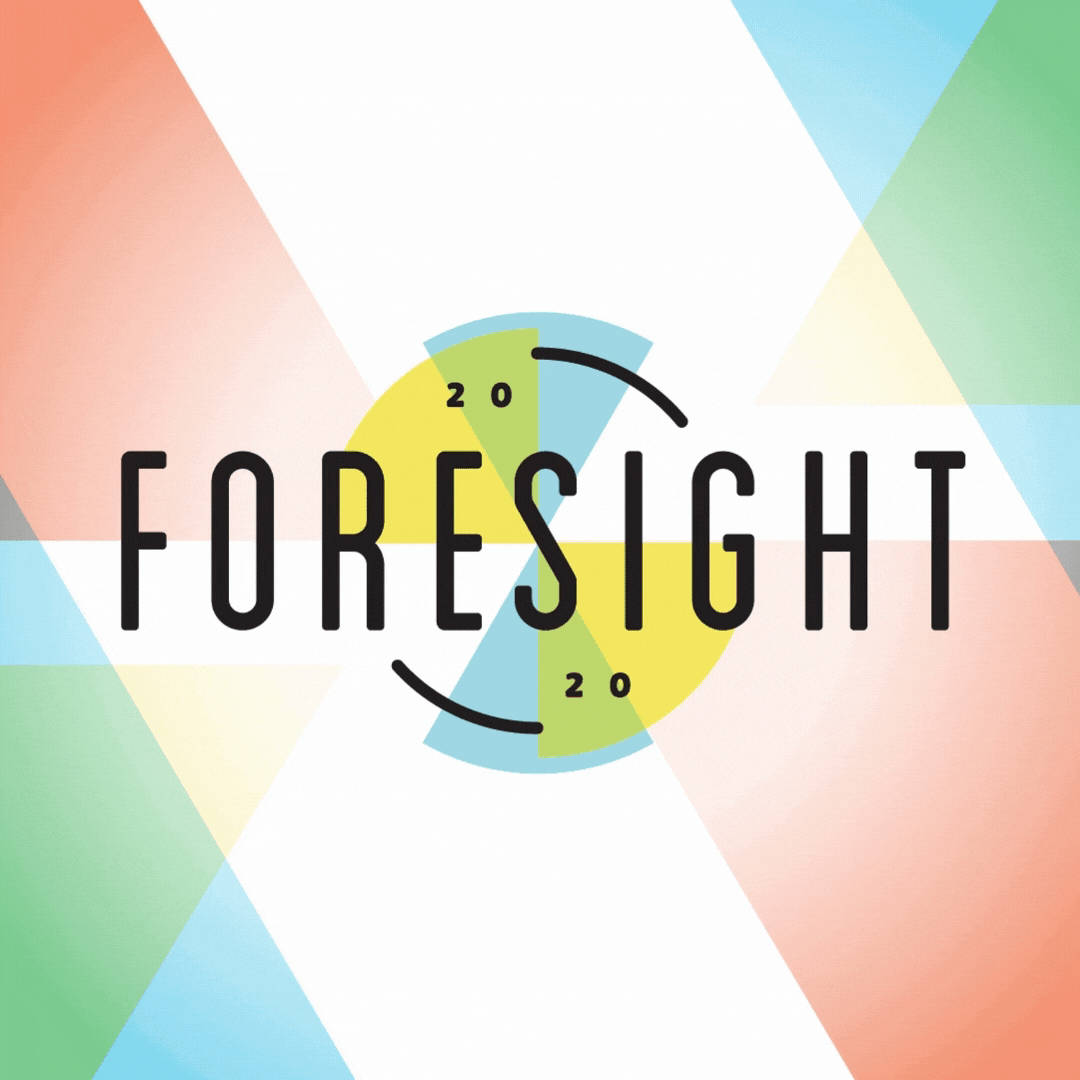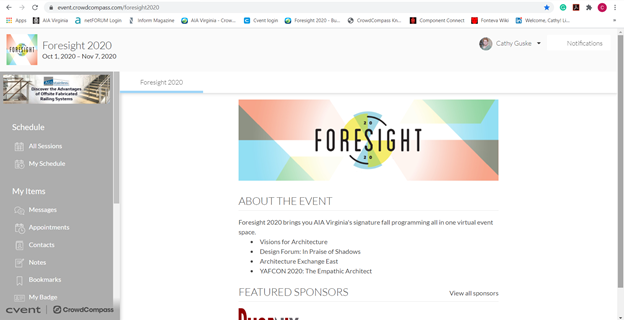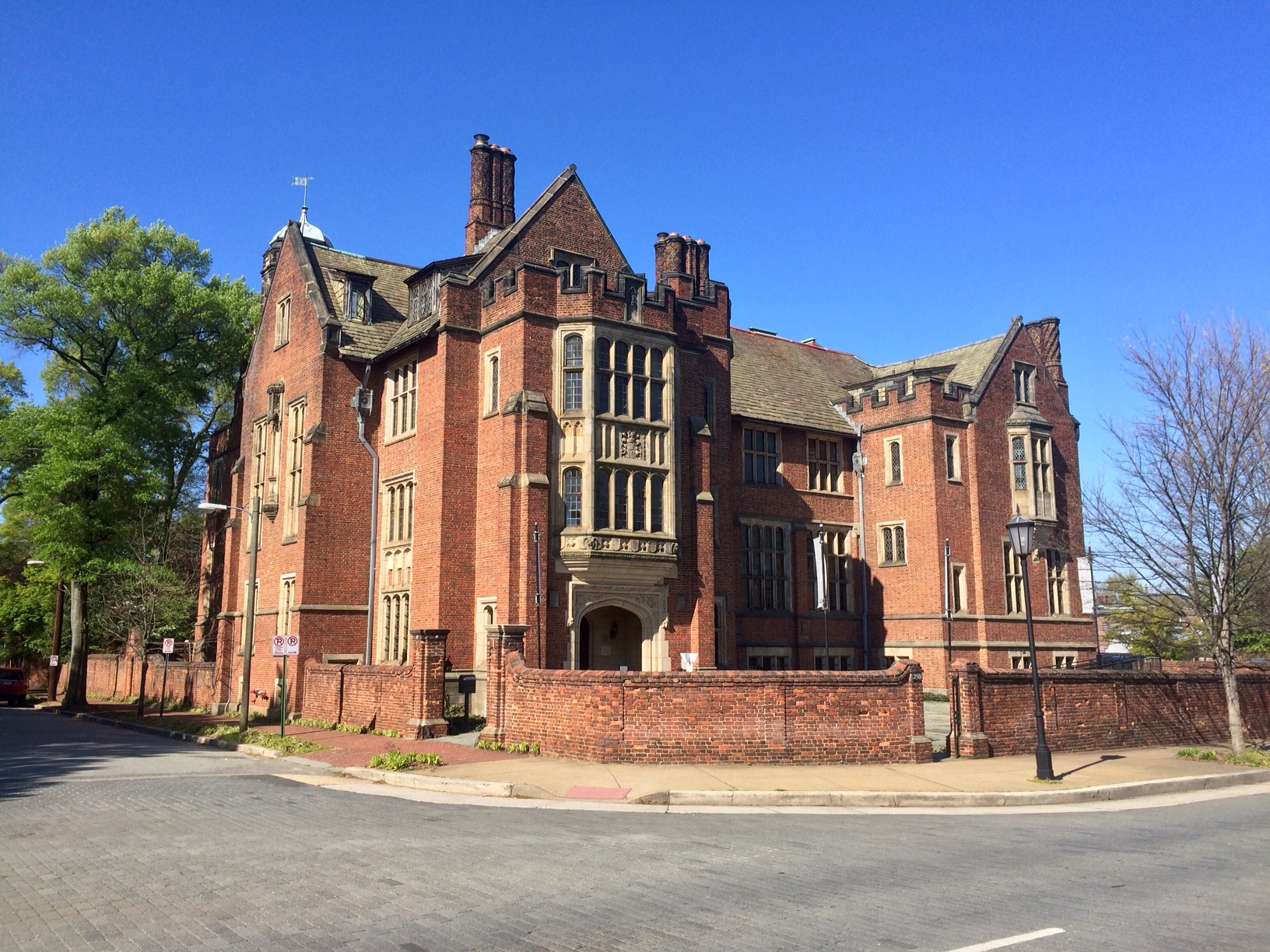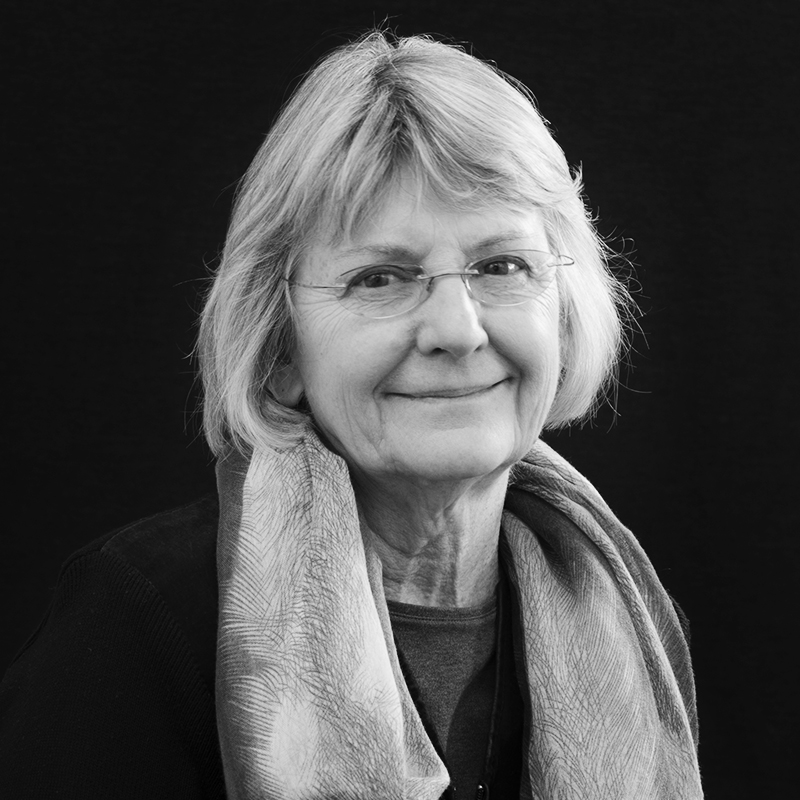Our journey as the AIA Virginia ELA Class of 2020, was unprecedented for many reasons. Tasked with finding ways to transform the city Portsmouth and create an equitable, vibrant and a resilient downtown was a challenge from afar. With the social and political crises and the challenges that the Coronavirus pandemic brought to test how the in-person program functions, our team managed to match the scale of the hurdles with the amount of dedication and passion we all brought to the table. This program is designed to bring select designers and architects from across the state of Virginia to hone their skills as future leaders, give the the opportunity to widen networks, all while meeting with other designers from varying points in their careers. As a group, we gained much more than we initially expected, and we experienced much more than we could have ever imagined. As the class of 2020, (Ariana Arenius, Catherine C. Hendrick, Paris Casey, Kenneth Johnston, Christopher Cheng, Kristin L. Jones, Amanda Ferzoco, Mert Kansu, Michael Lawson, Zach Robinson, James Vidoni, Jacob Sherry, Gabriela Orizondo, Matt C. Stevison, Allison Powell, and Randa Malkawi) we are thankful for all the individuals and organizations who have made this program possible, and how it helped us improve as designers, architects, and citizens.
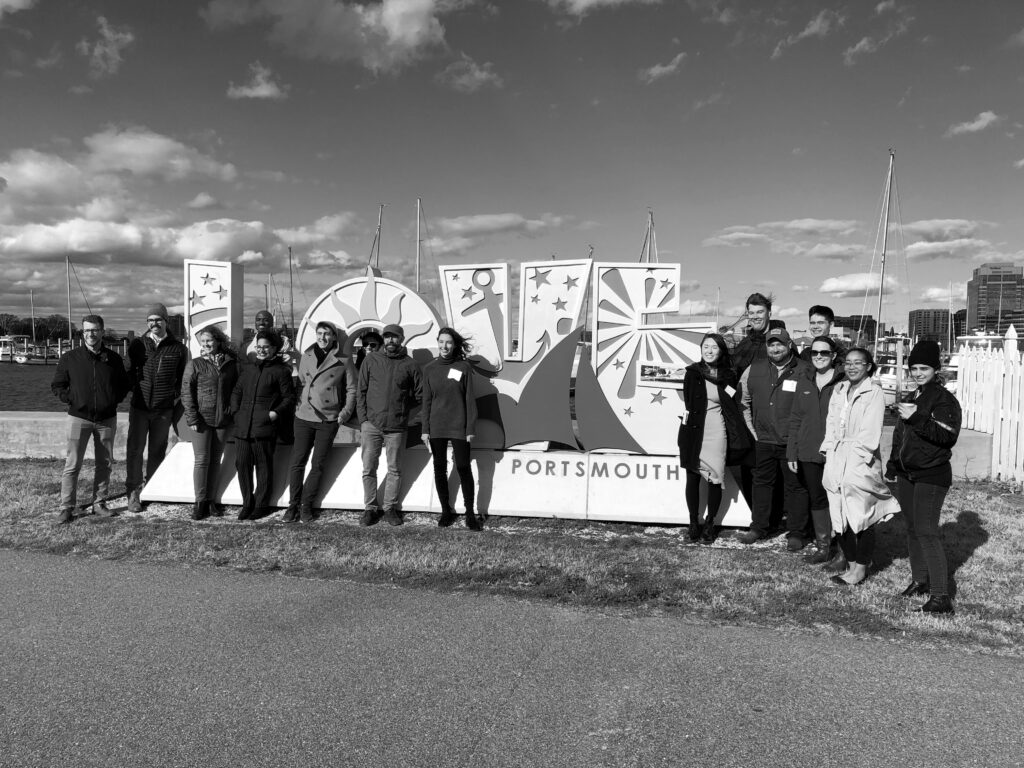
We started with bi-weekly tele-conferences for group and distributed tasks early in order to best coordinate. This made the transition to working from home and conducting the class fully virtually as smooth as possible. From the initial stages of the project research, we understood that any architectural intervention should reflect what the community desired. We did not aim to reform, transform, or rebrand the city without their involvement and accompaniment along the way. We believe what Portsmouth has in its local culture, history, and soul is invaluable. All we needed to do was make the right supporting moves as designers to reveal and compliment what was already present. Since we were not able to meet community members face-to-face, we utilized digital tools such as online surveys, social media advertisements, and digital flyers to reach out to the residents in survey form to get their opinions on what they feel was missing or could be improved in the city. With this survey data, site analyses, and research from past master planning efforts, we were able to pinpoint three main sites to focus our energy. We have selected two anchor sites, connected between with a re-envisioned street (High Street). These sites would help attract residents as well as visitors to the city, bringing a pedestrian friendly atmosphere to boost the commerce along High Street. This in turn could help kickstart a chain of development improvements throughout Portsmouth.
The Green Street Crossing site, located at the intersection of High and Green Streets, was an abandoned site of a former Church, since burnt down. Housing a large building mural of the Battle of Craney Island, this site has been envisioned as a park that includes green spaces, resting areas, a playground, and a community center. On redesigned High Street, more room for green space gives way to slowing traffic with pavement interventions and a more pedestrian and bike friendly setting. The High Street Landing site sits at the end of High Street at the waterfront. This development, already partially constructed in downtown Portsmouth, has been a commendable success, however the connection to the business corridor is lacking. An inlet housing music events and a dock for small boats is improves into an urban park with an educational and bio-diverse terrace containing oyster beds. This move brings back the local biome to the water’s edge, helping with stormwater runoff. An improved dock and a new pavilion building on the edge of the waterfront brings a dynamic stronghold to the coastline view from across the river. As the pedestrian walks inland towards the High Street corridor, the street is pedestrian oriented, but still allowing one way traffic. This area is flexible, with Farmer’s Market stalls in place for public use except during market hours.
Efforts were organized into parcels and concepts that can be individually phased to be more realistically funded and built. The intention was to have a multi-scale approach to our design. As a part of this effort, we wanted to zoom in to the human scale, the daily life of a person that is walking or driving around Portsmouth. With Wayfinding & Signage studies, we developed a package that included a vision of what wayfinding objects, street furniture, signage, and city art could look like, in order to reinforce the Portsmouth brand. As this design could spread farther away from the core downtown, we looked into redesigning the look of the tunnels, to instill a strong impression of the city for those traveling through.
With the art installation, named “The P” (as in Portsmouth,) iterations of a steel P shaped object have been created that could exist in different locations throughout the city. Made from oxidized steel, a familiar material to this historic naval city, we imagined this object could be a way for the community to come together, gather their expertise in artisans, and build a branded object which would be placed along the streets that are walked everyday.
Our work has been extensive, but we could not be happier with the results of this challenge. We have worked passionately to present something that could help improve Portsmouth. We gathered our work for this year into a book and gave multiple presentations to the community members, local organizations, and city officials. Months after our official graduation from the program, we are still in touch with the City, and working hard as a group to keep the conversation going to get construction started. We love the excitement that has resonated with the locals who have heard about the work. Our dream is that the city benefits, and in some way the work we have done can catalyze action among officials and developers to help realize the great potential that the city contains already.

